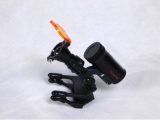
Recently we are seeing significant inquiries about problematic Cordless LEDs aka “Wireless LEDs”. The primary complaints is intermittent or totally non-functioning devices. The vast majority of criticism involves “newer” units no longer covered under the manufacturers warranty.
Examination
Excessive wear is obvious, presumably a result of constant removal & replacement of batteries for charging. Many units have missing contact surfaces, or the plastic clip that retain the battery is mangled or worn. Still others the battery itself is already dead.
Loupes with “built in” LEDs have the added issue of wires or flexible PCBs in the arms not functioning properly as a result of folding the frame arms.
Run Times:
Common run time of traditional battery pack is about 8-10 hours, some longer. On the other hand, Cordless LEDs requiring charging every couple hours seems common.
Consider this:
If you work 4-5 days a week and your cordless unit needs charging every 2 hours or so, – in a single year you could be removing & replacing the battery hundreds to well over a (1000) thousand times. Ask yourself: how many times can a lithium Ion battery be charged? – How long will my charger last running nearly constantly to keep up with my battery needs.
Before cordless LEDs, it was extremely rare to see a newer traditional Battery Pack in need of repair. (Except for accidental damage). Now, we see some pristine cordless LEDs no longer functioning properly after only about a year of normal use.
Considerations
Run Time,
When looking for a cordless LED, be sure to look for the run time on a single battery. Some claim run times up to 4-6 hours, but in the fine print you may find thats on the lowest setting & using multiple batteries.
Weight,
Also inquire about the weight of the entire device that will be added on the bridge of your nose. Total weight, not just the LED without the battery. Read the fine print
Other criticism,
Impressions on a users nose caused by cordless units additional weight. Some complain of cordless LEDs shadow while using the dental offices overhead light. Still others report headaches & pain on bridge of their nose. A few, who questioned the seller of the device, said they were encouraged to limit or use the unit less frequently.
